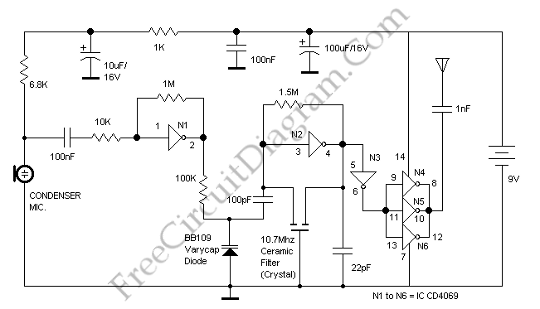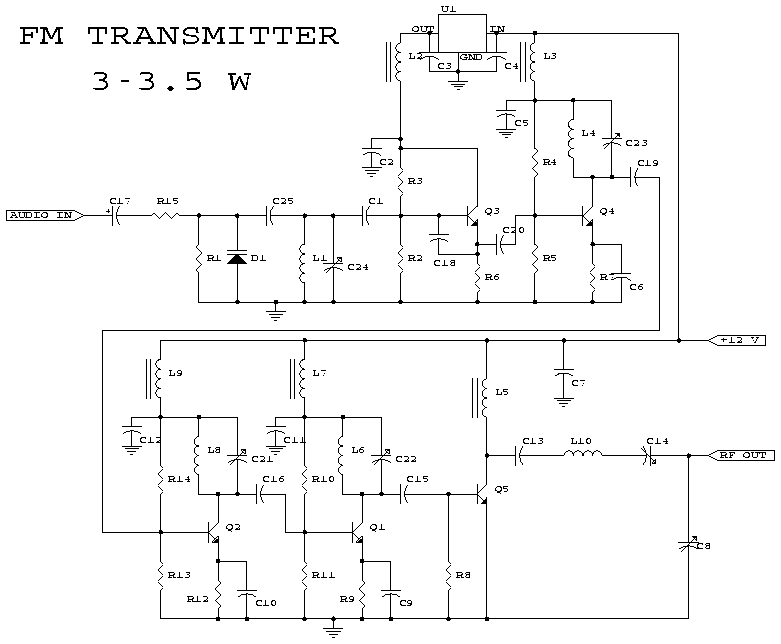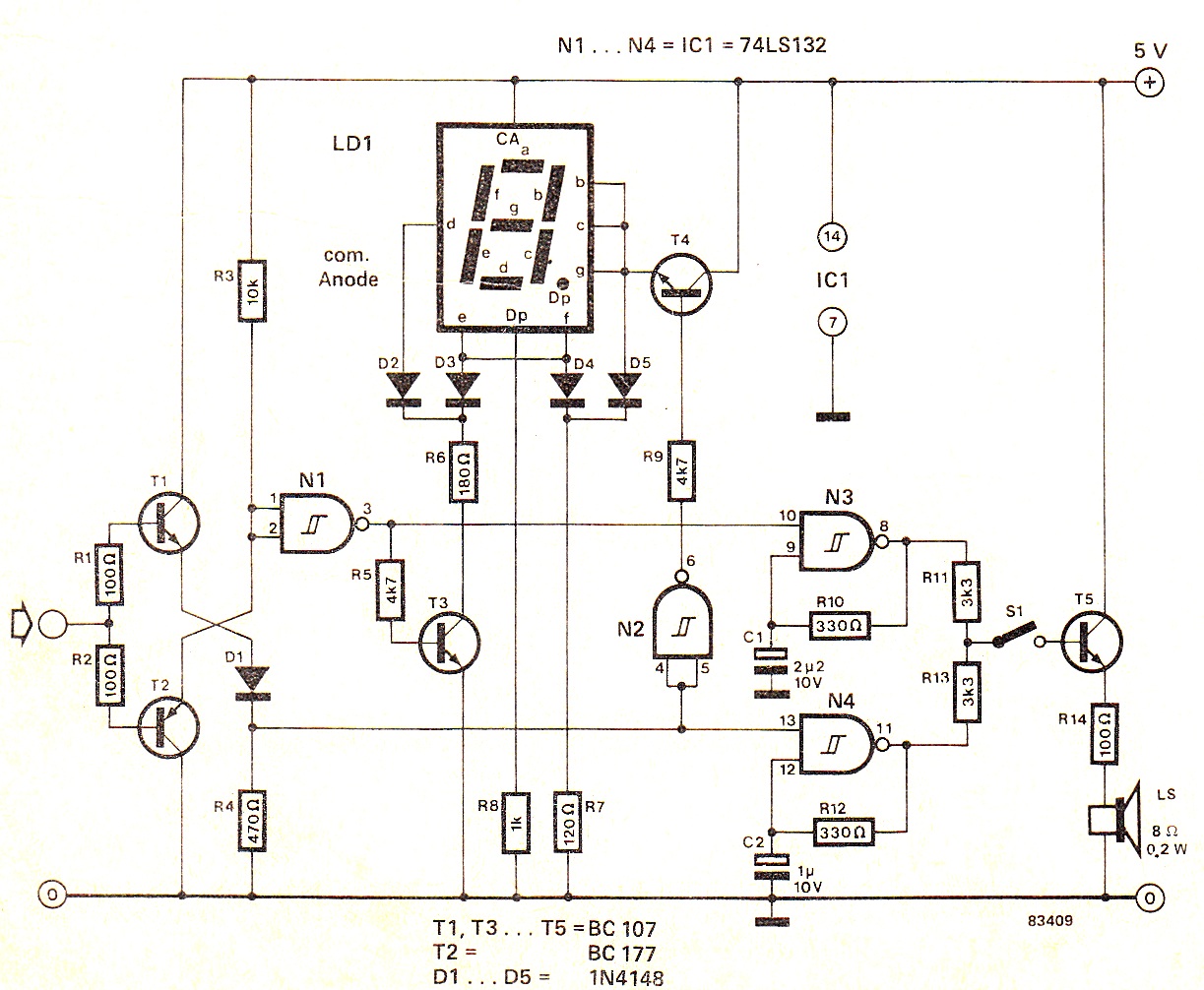
FM Transmitter Using Logic Gates

This is an FM transmitter circuit that utilizes logic gates. The circuit features a radio frequency (RF) oscillator, which operates with a 10.7 MHz ceramic filter.
The FM transmitter circuit is designed to modulate audio signals onto a carrier frequency for transmission over radio waves. The core component of this circuit is the RF oscillator, which generates a stable 10.7 MHz frequency. This frequency is typically chosen for its compatibility with common FM radio band frequencies, allowing for effective transmission.
The logic gates in the circuit serve various functions, including signal processing and modulation. These gates can be implemented using CMOS or TTL technology, depending on the design requirements. The oscillator's output is fed into the modulation stage, where the audio input signal is combined with the carrier wave. This is typically achieved through a mixer circuit that uses diodes or transistors to effectively superimpose the audio signal onto the carrier frequency.
The ceramic filter plays a crucial role in ensuring that the output signal is clean and free from unwanted harmonics or spurious signals. Operating at 10.7 MHz, the filter allows the desired frequency to pass while attenuating others, ensuring compliance with regulatory standards for FM transmission.
Power supply considerations are also essential in the design of the FM transmitter. A regulated power supply is recommended to maintain consistent performance, particularly in the RF oscillator stage. Additionally, the output stage may incorporate an amplifier to boost the signal strength before transmission, allowing for greater range and clarity.
Overall, this FM transmitter circuit represents a straightforward yet effective design for wireless audio transmission, utilizing fundamental electronic components and principles. Proper tuning and antenna design will further enhance the performance and range of the transmitter, making it suitable for various applications in amateur radio, educational projects, and low-power broadcasting.This is a FM Transmitter circuit. This circuit uses logic gates. This transmitter circuit has a RF oscillator. This oscillator uses 10.7Mhz ceramic filter and. 🔗 External reference
The FM transmitter circuit is designed to modulate audio signals onto a carrier frequency for transmission over radio waves. The core component of this circuit is the RF oscillator, which generates a stable 10.7 MHz frequency. This frequency is typically chosen for its compatibility with common FM radio band frequencies, allowing for effective transmission.
The logic gates in the circuit serve various functions, including signal processing and modulation. These gates can be implemented using CMOS or TTL technology, depending on the design requirements. The oscillator's output is fed into the modulation stage, where the audio input signal is combined with the carrier wave. This is typically achieved through a mixer circuit that uses diodes or transistors to effectively superimpose the audio signal onto the carrier frequency.
The ceramic filter plays a crucial role in ensuring that the output signal is clean and free from unwanted harmonics or spurious signals. Operating at 10.7 MHz, the filter allows the desired frequency to pass while attenuating others, ensuring compliance with regulatory standards for FM transmission.
Power supply considerations are also essential in the design of the FM transmitter. A regulated power supply is recommended to maintain consistent performance, particularly in the RF oscillator stage. Additionally, the output stage may incorporate an amplifier to boost the signal strength before transmission, allowing for greater range and clarity.
Overall, this FM transmitter circuit represents a straightforward yet effective design for wireless audio transmission, utilizing fundamental electronic components and principles. Proper tuning and antenna design will further enhance the performance and range of the transmitter, making it suitable for various applications in amateur radio, educational projects, and low-power broadcasting.This is a FM Transmitter circuit. This circuit uses logic gates. This transmitter circuit has a RF oscillator. This oscillator uses 10.7Mhz ceramic filter and. 🔗 External reference





